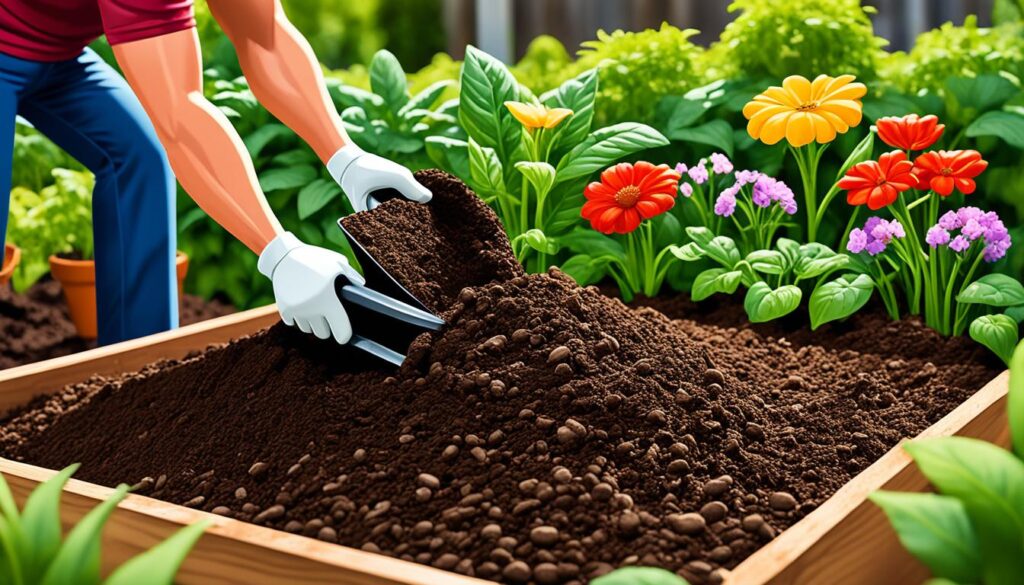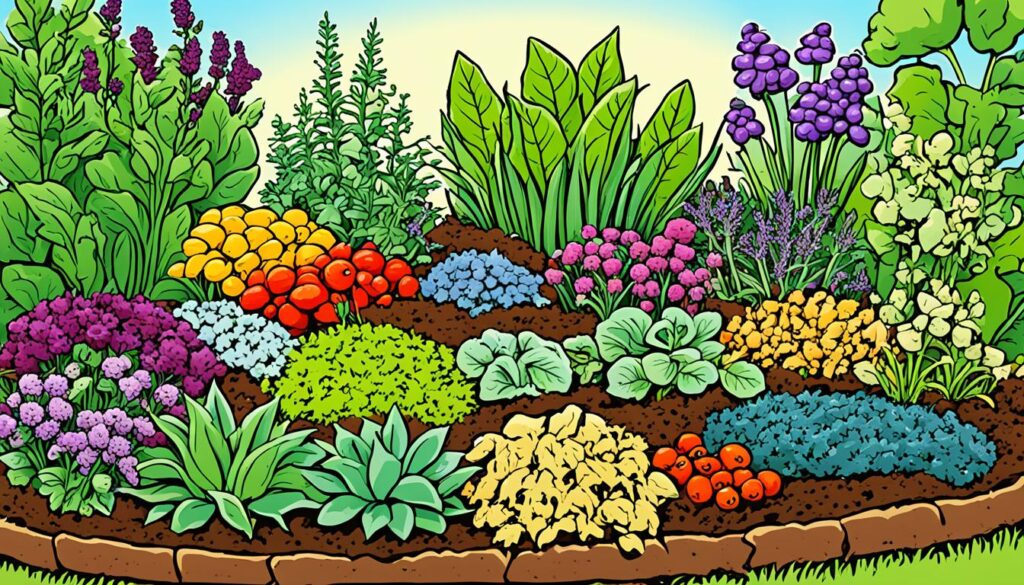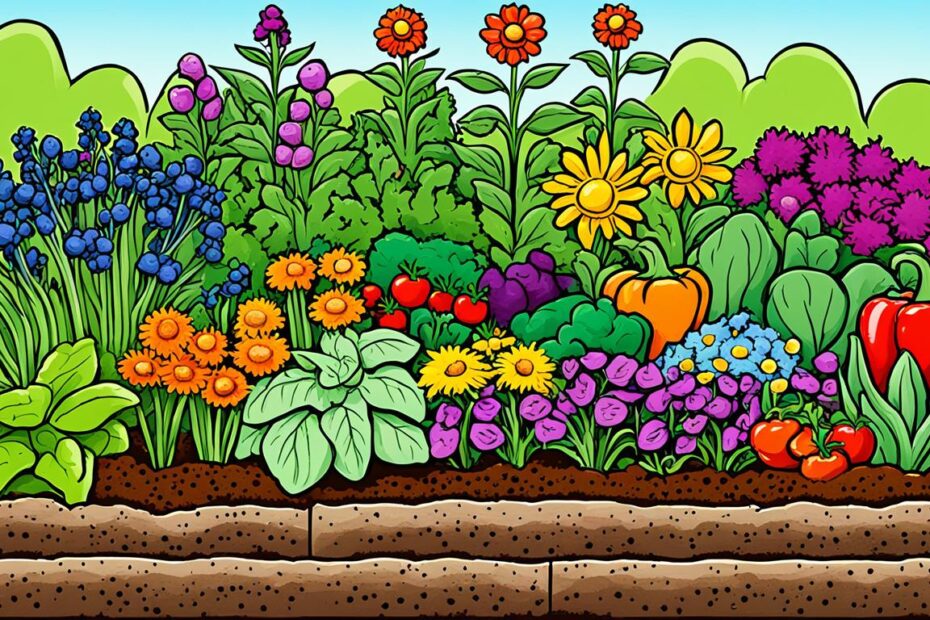When it comes to gardening, the secret to success lies in the soil. But with so many options available, how can you choose the right one for your garden? Today, we’ll explore the differences between raised bed soil and potting soil, two popular choices among gardeners. Are you ready to discover which soil will elevate your gardening game?
Understanding Garden Soil and Potting Soil
Garden soil and potting soil are essential components in any gardener’s toolkit, but it’s important to understand their distinct characteristics and uses. While both are designed to support plant growth, they differ in composition and usage.
Garden soil, as the name suggests, is primarily used for in-ground gardening. It is typically a mixture of topsoil, sand, clay, and organic matter. The composition of garden soil can vary depending on the region and the type of plants being cultivated. This type of soil is heavier and more moisture-retentive, making it suitable for outdoor planting and landscaping projects.
Potting soil, on the other hand, is specifically formulated for container gardening. It is a lightweight and well-draining mix that provides optimal conditions for potted plants. Potting soil consists of a combination of ingredients such as peat moss, vermiculite, perlite, and sometimes compost. These components create a loose and airy texture, allowing for adequate airflow and water drainage in containers.
| Garden Soil | Potting Soil |
|---|---|
| Used for in-ground gardening | Designed for container gardening |
| Heavier and more moisture-retentive | Lightweight and well-draining |
| Contains topsoil and organic matter | Composed of peat moss, vermiculite, and perlite |
While garden soil and potting soil serve different purposes, they can complement each other in certain situations. For example, garden soil can be blended with potting soil to improve the moisture-retention and nutrient levels in container gardens. Conversely, potting soil can be used to create a raised bed garden by filling it with a lightweight mix that ensures proper drainage.
Understanding the characteristics and uses of garden soil and potting soil will help you make informed decisions when selecting the right soil for your gardening projects. Whether you’re growing plants in the ground or in containers, choosing the appropriate soil will provide a solid foundation for healthy plant growth and vibrant gardens.
CLICK HERE TO CHECK OUR RECOMMENDED PRODUCTSBenefits and Uses of Garden Soil
When it comes to gardening, the right choice of soil can make all the difference in the health and vitality of your plants. Garden soil, with its numerous benefits and versatile uses, is a must-have for any enthusiastic gardener. Let’s explore the advantages of garden soil and how you can incorporate it into your gardening routine.
Better Soil Composition and Reduced Compaction
One of the key benefits of garden soil is its ability to improve the composition of native soil. When mixed with the existing soil in your garden, garden soil enriches it with organic matter and essential nutrients, creating a fertile ground for robust plant growth. Additionally, garden soil helps reduce soil compaction, providing a looser and more porous structure that promotes healthy root development and allows for improved water penetration.
A Rich Source of Nutrients
Garden soil is packed with essential nutrients that are vital for the nourishment of your plants. With a balanced combination of organic matter, minerals, and microorganisms, garden soil provides plants with the necessary components to thrive. These nutrients include nitrogen, phosphorus, potassium, and trace elements that contribute to healthy leaf, flower, and fruit development. By using garden soil, you can ensure that your plants have access to a steady supply of nutrients throughout their growing season.
Versatility for Various Plant Types
Garden soil is highly versatile and suitable for a wide range of plant types. Whether you’re growing vibrant flowers, luscious vegetables, or fragrant herbs, garden soil provides an ideal growing medium. Its moisture retention properties keep plants hydrated while supporting strong root systems. The improved soil structure created by garden soil allows roots to penetrate easily, encouraging healthy growth and minimizing the risk of root rot.
To better understand the benefits of garden soil, take a look at the following table for a summary of its advantages and uses:
| Benefits of Garden Soil | Uses of Garden Soil |
|---|---|
| Improves soil composition | In-ground gardening |
| Reduces soil compaction | Soil amendment |
| Provides essential nutrients | Creating raised beds |
| Promotes strong root systems | Mixing with potting soil |
| Versatile for various plant types | Boosting plant growth |
As you can see, garden soil offers a wide array of benefits and uses for your gardening endeavors. Its ability to improve soil quality, provide essential nutrients, and support plant growth makes it a valuable tool in cultivating a thriving garden.
Next, we will explore the advantages of raised bed soil, specifically designed for raised garden beds and containers, and discover how it can elevate your gardening experience.
Advantages of Raised Bed Soil
Raised bed soil offers a multitude of advantages for your gardening endeavors. Whether you have raised garden beds or containers, using raised bed soil can elevate your gardening experience in several ways.
Excellent Drainage
One of the key advantages of raised bed soil is its excellent drainage properties. The loose soil texture allows excess water to flow away easily, preventing waterlogging and root rot. This ensures that your plants receive the right amount of moisture without being deprived of oxygen.
Optimal Airflow for Roots
The loose texture of raised bed soil also promotes sufficient airflow for plant roots. This is essential for proper root development and overall plant health. The improved airflow helps prevent root diseases and encourages the growth of strong, vigorous roots.
Rich in Organic Nutrients
Raised bed soil is enriched with organic nutrients that provide essential nourishment for your plants. Ingredients such as poultry meal, kelp meal, and worm castings offer a balanced blend of macro and micronutrients, promoting healthy growth and abundant yields.
Convenience and pH Balance
Raised bed soil is pH-balanced, ensuring that your plants have the ideal soil conditions for optimal growth. Additionally, raised bed soil is ready to use, saving you time and effort in preparing the soil. Its convenient nature allows you to start planting right away and enjoy the benefits of a well-prepared growing medium.
Overall, raised bed soil is a versatile and advantageous choice for your gardening needs. Its great drainage, optimal airflow, organic nutrients, and convenience make it the perfect soil for cultivating vibrant and thriving plants in your raised beds or containers.
CLICK HERE TO CHECK OUR RECOMMENDED PRODUCTSChoosing the Best Soil for Raised Garden Beds
When it comes to raised garden beds, selecting the best soil is essential to ensure healthy plant growth and maximize your gardening success. The ideal soil combination for raised garden beds consists of a blend of potting mix and garden soil. By combining these two soil types, you can create an optimal growing environment that provides the necessary balance of nutrients, drainage, and aeration.
Potting mix is a key component of the best soil for raised garden beds due to its lightweight and well-draining properties. It is specifically formulated for container gardening and is designed to provide the right level of moisture retention and airflow for plant roots. Potting mix consists of a blend of organic materials such as peat moss, perlite, and vermiculite, which promote optimal root development and prevent soil compaction.
Garden soil, on the other hand, adds essential nutrients and enhances soil structure. It is typically heavier and more moisture-retentive than potting mix, making it ideal for blending with potting mix to create the perfect raised bed soil. Garden soil contains topsoil and a mixture of forested products, such as compost and aged manure, which provide rich organic matter and beneficial microorganisms for plant growth.
To create the best soil for raised garden beds, combine potting mix and garden soil at a proper ratio. A recommended ratio is 1 part potting mix to 2 parts garden soil. This combination ensures that your raised bed soil has the right balance of nutrients, drainage, and aeration, allowing your plants to thrive.
If you prefer a DIY approach, you can create your own raised bed soil by blending garden soil and potting soil at the recommended ratio. This allows you to have complete control over the quality and composition of the soil, ensuring it meets the specific needs of your plants.
Benefits of Using a Blend of Potting Mix and Garden Soil for Raised Garden Beds:
- Provides optimal balance of nutrients, drainage, and aeration
- Promotes healthy root development and prevents soil compaction
- Enhances soil structure and nutrient availability
- Allows for better water penetration and soil moisture control
- Suitable for a wide variety of plants, including vegetables, herbs, and flowers
By choosing the best soil for your raised garden beds, you can create an ideal environment that supports healthy plant growth and yields bountiful harvests. Remember to regularly monitor the moisture levels in your raised beds, provide proper fertilization, and adjust the soil composition as needed to ensure the continued success of your garden.
| Benefits | Potting Mix | Garden Soil |
|---|---|---|
| Lightweight and well-draining | ✓ | ✗ |
| Rich in nutrients | ✗ | ✓ |
| Promotes optimal root development | ✓ | ✓ |
| Enhances soil structure | ✗ | ✓ |
| Prevents soil compaction | ✓ | ✗ |
Combining potting mix and garden soil in the right proportions provides the best of both worlds, ensuring that your raised garden beds have the ideal growing conditions for your plants. Whether you choose to purchase a pre-made soil blend or create your own, investing in high-quality soil will yield fruitful results in your raised garden beds.

Nourishing Your Plants with Soil Amendments
To ensure optimal plant growth in raised garden beds, it is recommended to supplement the soil with organic fertilizers and soil amendments. These amendments provide essential nutrients and improve the overall quality of the soil, giving your plants the best possible environment to thrive.
Organic Fertilizers
Organic fertilizers, such as compost, algae, and worms, are excellent choices for enriching the soil in your raised garden beds. These natural fertilizers release nutrients slowly, providing a steady supply of nourishment throughout the growing season. Additionally, they improve soil structure, encourage beneficial microbial activity, and enhance nutrient absorption by plant roots.
“Organic fertilizers are a sustainable and eco-friendly way to nourish your plants. They not only provide essential nutrients but also improve the overall health of the soil.”
Soil Amendments
In addition to organic fertilizers, incorporating soil amendments into your raised bed soil can further enhance its quality. Soil amendments like perlite, vermiculite, and sand improve soil drainage and aeration, ensuring that excess water does not accumulate around plant roots. This helps prevent the risk of root rot and promotes healthy root development. Furthermore, soil amendments help retain moisture in the soil while still allowing sufficient airflow, creating an optimal balance for plant growth.

By adding these soil amendments to your raised garden beds, you can create an ideal growing environment that supports the long-term health and productivity of your plants.
The Benefits of Soil Amendments:
| Soil Amendment | Benefits |
|---|---|
| Perlite | Improves soil drainage Enhances aeration Prevents soil compaction |
| Vermiculite | Retains moisture in the soil Improves nutrient retention Enhances root growth |
| Sand | Improves soil structure Enhances drainage Adds weight to lightweight soils |
As illustrated in the table above, each soil amendment brings unique benefits to your raised garden beds. Combining different amendments can customize the soil according to your specific plant requirements.
Remember to follow the recommended application rates when adding organic fertilizers and soil amendments to your raised bed soil. Over-application can lead to nutrient imbalances or drainage issues, while under-application may not provide sufficient benefits for your plants.
By nourishing your plants with soil amendments, you are providing them with the essential nutrients and optimal growing conditions they need to thrive in your raised garden beds.
CLICK HERE TO CHECK OUR RECOMMENDED PRODUCTSAdditional Tips for Using Raised Bed Soil
When it comes to using raised bed soil, there are a few important tips to keep in mind to ensure the success of your garden. These tips will help you maximize the benefits of using raised bed soil and create an optimal growing environment for your plants.
- Fill raised beds or containers with raised bed soil: When filling your raised beds or containers, make sure to use raised bed soil specifically designed for this purpose. Fill the beds or containers, leaving some space at the top for watering and plant growth.
- Follow package instructions for organic granular fertilizer: Raised bed soil is often pre-mixed with organic granular fertilizer to provide essential nutrients for your plants. Follow the package instructions to determine the proper amount and frequency of fertilizer application.
- Properly position your plants: When planting in raised bed soil, ensure that the root ball of your plants is positioned correctly in the soil mix. This will allow the roots to establish and grow properly, supporting healthy plant growth.
- Water the soil well: Raised bed soil needs to be watered thoroughly to ensure proper hydration of the plants. Water the soil deeply, ensuring that it reaches the root zone. Regular watering is important to maintain the moisture levels in the soil.
- Regularly fertilize with liquid fertilizer: In addition to the organic granular fertilizer, liquid fertilizer can be beneficial for providing a quick nutrient boost to your plants. Regularly fertilize the soil with liquid fertilizer according to the product instructions.
- Replenish nutrients each season: Over time, the nutrients in the raised bed soil may deplete. To replenish these nutrients, add a layer of raised bed soil to the existing soil in your raised beds or containers each season. This will help ensure that your plants have access to the necessary nutrients for healthy growth.
By following these tips, you can make the most out of using raised bed soil in your garden. Your plants will thrive in the nutrient-rich, well-draining environment provided by the raised bed soil, leading to a bountiful and beautiful garden.
Conclusion
In conclusion, selecting the right soil is crucial for successful gardening. Whether you opt for garden soil or raised bed soil, understanding their characteristics and purposes is key to creating an optimal growing environment for your plants.
Garden soil, with its nutrient-rich composition and excellent drainage, is perfect for in-ground gardening. It helps enhance soil structure, promotes strong root development, and provides essential nutrients to support healthy plant growth.
On the other hand, raised bed soil is specifically designed for raised beds and containers. It offers excellent drainage, a loose soil texture, and organic nutrients like poultry meal and kelp meal to nourish your plants. With its pH-balanced formulation, raised bed soil provides an ideal growing medium for vegetables and flowers in raised beds or large containers.
By considering the differences between these soils, you can make an informed decision and choose the right soil for your gardening needs. Whether you’re planting in the ground or using raised beds, the right soil will set the foundation for a thriving garden, ensuring your plants receive the proper nutrition and support they need to flourish.
FAQ
What is the difference between garden soil and potting soil?
Garden soil is typically used for in-ground gardening and contains topsoil and forested products, making it heavier and more moisture-retentive. Potting soil is specifically formulated for container gardening, offering a lightweight and well-draining mix.
What are the benefits and uses of garden soil?
Garden soil helps reduce native soil compaction, improves soil composition, and provides essential nutrients for plants. It is ideal for mixing with native soil to enhance its quality and structure, promoting strong root systems and moisture retention.
What are the advantages of raised bed soil?
Raised bed soil is specifically designed for raised garden beds and containers. It offers excellent drainage, loose soil texture, and sufficient airflow for plant roots. It is enriched with organic nutrients and pH-balanced, making it ideal for growing vegetables and flowers.
What is the best soil for raised garden beds?
The best soil for raised garden beds is a blend of potting mix and garden soil. This combination provides the ideal balance of nutrients, drainage, and aeration necessary for healthy plant growth.
How can I nourish my plants with soil amendments?
Adding organic fertilizers, such as compost, algae, and worms, throughout the growing season provides additional nutrients. Soil amendments like perlite, vermiculite, and sand can improve soil drainage and aeration, enhancing soil quality and supporting healthy plant growth.
Any tips for using raised bed soil?
Fill raised beds or containers with raised bed soil, leaving some space at the top. Follow package instructions to add organic granular fertilizer, position plants correctly, and water the soil well. Regularly fertilize with liquid fertilizer and consider adding a layer of raised bed soil each season to replenish nutrients.
What is the key takeaway when choosing soil for gardening?
Choosing the right soil is crucial for successful gardening. While garden soil is best for in-ground gardening, raised bed soil is specifically designed for raised beds and containers. Understanding the differences between these soils helps create an optimal growing environment for your plants.
